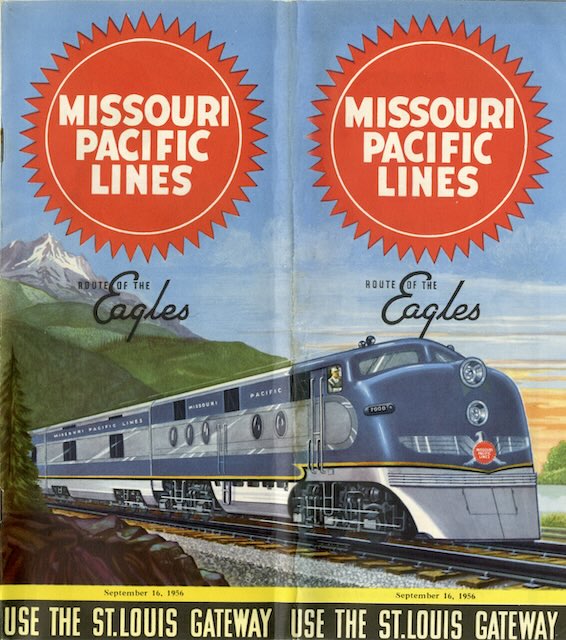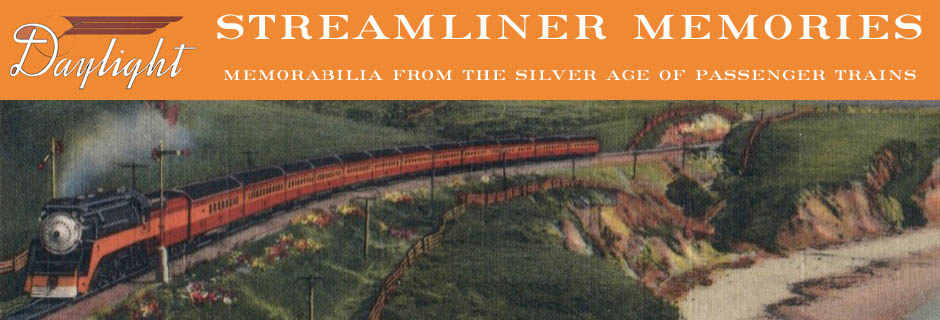No. 8 in the historic landmark series, which appears on the page just before the centerfold map, features the old St. Louis courthouse. “Until 1861 slave auctions were held on its east steps” and in 1847 it hosted the infamous case of Dred Scott, a slave who sued his owner for freedom after the two had lived for a time in a free state. The accompanying illustration, which shows both a slave auction and Mr. Scott as a quite distinguished gentleman (based on this painting), is signed Keil.
 Click image to download a 25.5-MB PDF of this 48-page timetable.
Click image to download a 25.5-MB PDF of this 48-page timetable.
The page after the centerfold map features the Colorado capitol as the second (in alphabetical order) of state capitols features on Missouri Pacific service plates. It notes that the architect who designed Colorado’s capitol also designed the ones in Michigan and Texas; the latter, of course, is also on the service plate.
The inside front cover advertises the Eagles as “extra fine trains at no extra fare,” thus playing off against Santa Fe’s “extra fine extra fare” slogan that was first applied to its de-Luxe. Of course, the purpose of the “extra fare,” which was mainly applied to all-Pullman trains, was to denote a sense of exclusivity.
The inside back cover shows freight schedules, but the back cover shows something new: the idea of containers that could be lifted off of a truck frame and then “cradled in any open top freight car.” The illustration shows a crane setting a container into a gondola rather than flatcar as is the practice today.
Many web sites claim that the container idea was developed in 1956 by Malcolm McLean. In fact, the White Pass & Yukon Route had pioneered a container system in 1955 and other container experiments preceded even that. Both the White Pass and McLean used containers to transfer freight from ships to trains or trucks, while MP’s early containers focused on transfers between trains and trucks.
According to the timetable, MP used containers between St. Louis and Kansas City and “the new service is being extended as rapidly as possible to the entire Missouri Pacific system,” eventually reaching the Texas & Pacific as well. The Missouri Pacific Historical Society offers a model of MP’s early containers, which it says were 32′ long and 8-1/2′ tall. Today most containers are 20, 40, or 45 feet long.
